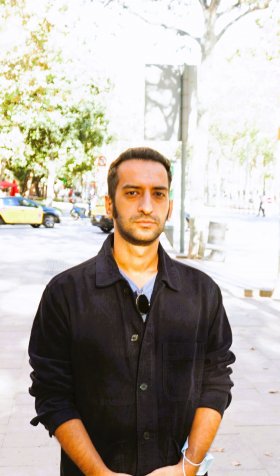Mohammadali Zoljalali

PhD Programme: Nanoscience, Materials and Chemical Engineering
Research group: FiCMA – Physics and Cristallography of Materials
Supervisor: Xavier Mateos Ferré & Francisco Manuel Díaz González
Bio
Mohammadali Zoljalali graduated with a bachelor of science in Chemical Engineering from the Babol Noshirvani University of Technology, Iran where the thesis was on the application of the microfluidic device in the field of drug delivery. Afterward, He undertook an MSc in Chemical engineering at the University of Mazandaran. At the end of the course, he wrote a master's thesis on fluid behavior in parallel microchannel devices through a complexion of experiments and CFD models. During this period, he experienced prototyping microfluidic devices, acquiring a well understanding of liquid property, and governing theory in microscale and simulation of microfluidic devices with different pieces of finite element software. Writing two articles on fluid behavior in parallel microchannels was the fruit of his master's degree. He worked on a microfluidic-based photocatalytic microreactor for water treatment as well. In these projects, after synthesizing photocatalysis, and immobilizing them in the microfluidic devices, different parameters that effects on degradation of water contaminants were analyzed.
Project: Efficient H2 production in microfluidic platforms and sensing based on optical fibers
Environmental problems are forcing the introduction of new technologies that are capable of producing and using energy more efficiently and cleanly. Within the group of alternative energy systems, hydrogen (H2) stands out because it is an efficient and clean fuel. The growing demand to use H2 as a sustainable source of energy in the coming years prompts the need to develop new technologies for boosting the production efficiency as well as for its rapid detection in concentrations close to the lower explosive limit (4% H2). Water electrolysis is the most eco-friend way of H2 production. The H2 generation in microsystems, such as microreactors or microfluidic electrolyzes is of great interest to boost the efficiency of H2 production as compared to bulky tank production. Palladium alloys are commonly used as a selective layer of H2 due to the excellent property of this metal to absorb large amounts of this gas. These materials are combined with some electronic devices for sensing, although they present problems in terms of stability and selectivity when exposed for long periods to H2. The field of H2 sensors based on optical fibers includes systems such as Bragg gratings, micromirrors, plasmon resonance effects, interaction with the evanescent field, among others, having the advantage of being applied in areas of difficult access and / or environmental conditions. To increase the efficiency for H2 production and to have a reliable, portable, robust and sensitive H2 optical sensor would definitely give answer to the needs of the industry for the next years. This project aims to design, manufacture, characterize and test a micro electrolytic cell to enhance the H2 production efficiency. This will be accomplished by means of microfluidic platforms. Besides, the development of an optical H2 sensor is also aimed. The H2 optical sensor will use fiber optics for high stability, selectivity, and robustness.
Outreach activities
- European Researchers' Night 2023: "Parc de Fluídica".



